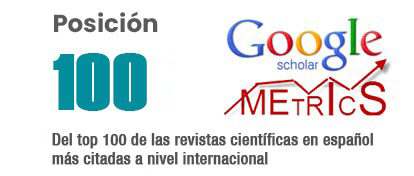Cultural diversity and problems with bullying in the field of basic education
DOI:
https://doi.org/10.62452/j5gg7k84Keywords:
Cultural diversity, Bullying, bullying or bullying, coexistenceAbstract
Bullying in the school environment can be considered as violent behavior essentially harmful to children of Basic Education in several ways, fundamentally for the student's academic performance, his mood, self-esteem and creates a hostile environment in the school . One of its main causes is associated with the cultural diversity existing in the school context due to multiple manifestations, such as migration and social exclusion due to ethnicity, race, beliefs, customs, sexual preferences, physical characteristics, among others. This text intends to analyze bullying in the school environment, by describing and explaining its most common manifestations of the school context, to help eliminate, and at least, decrease in Ecuador, such an ominous practice. To develop it, the qualitative methodology is applied, and various bibliographies and documents are consulted, descriptive analytical methods are used, as well as synthetic analytics. Finally, a broad description and reflection is offered, which could contribute to promoting a healthy coexistence in educational institutions.
Downloads
References
Borsa, J., Wanderley, G., & Koller, S. (2015). La participación de los padres en las investigaciones sobre el bullying escolar. Revista Psicologia Escolar e Educacional, 19(1), 41-48.
Caravita, S., & Colombo, B. (2016). Comportamento de bullying, doenças na juventude e intervenção: quais são as sugestões. Jornal de Pediatria, 92(1), 4-6.
Careaga, M., & Fuentes, C. (2017). Bullying Escolar: Una Mirada Pedagógica y Ética del Problema. https://www.ucsc.cl/blogs-academicos/bullying-escolar-una-mirada-pedagogica-y-etica-del-problema/
Cruz, E. (2014). Multiculturalismo, interculturalismo y autonomía. Estudios Sociales. Revista de alimentación contemporánea y desarrollo regional, 22(43), 241-269.
Duque, E., & Teixido, J. (2016). Bullying y Género. Prevención desde la Organización Escolar. Multidisciplinary Journal of Educational Research, 6(2), 176-204.
Echeverría, R., Paredes, L., Diódora, M., Batún, J., & Carrillo, C. (2017). Acoso y hostigamiento sexual en estudiantes universitarios: un acercamiento cuantitativo. Enseñanza e Investigación en Psicología, 22(1), 15-26.
Ecuador. Ministerio de Educación. (2016). ¿Qué es el Código de Convivencia y Cómo Elaborarlo? Educar Plus. https://educarplus.com/2016/10/que-es-el-codigo-de-convivencia-y-como.html
Espinoza, E. E., & Ricaldi, M. L. (2019). Desarrollo de habilidades intelectuales en docentes de educación básica de Machala, Ecuador. Educación, 28(55).
Leyva, L. (2019). Cuidado con el bullying. http://www.tiempo21.cu/2019/05/09/cuidado-con-el-bullying
Lotti, A. (2019). Bullying: Pocos segundos para un gran maltrato. http://cubasi.cu/cubasi-noticias-cuba-mundo-ultima-hora/item/63857-bullying-pocos-segundos-para-un-gran-maltrato
Mendes, A., & Krieger, P. (2014). Bullying nas escolas: a metodologia dos círculos restaurativos. Rede de Revistas Científicas da América Latina, Caribe, Espanha e Portugal, 37(2), 278-287.
Ordoñez, C. (2017). El Bullying, contextualizado en dos unidades educativas básicas del cantón de Santa Elena - Ecuador. Revista Ciencias Pedagógicas e Innovación, 5(2), 78-83.
Pérez, J. (2016). ¿Cómo se relacionan las características de los profesores con el bullying escolar? Revista Desarrollo y Sociedad, (77), 183-230.
Ruíz, R., & García, J. (2018). La relación bullying-deserción escolar en bachilleratos rurales. Revista Electrónica de Investigación Educativa, 20(2), 37-45.
Sallán, J., & Armengol, C. (2013). El «bullying» escolar. Consideraciones organizativas y estrategias para la intervención. Revista Educación XX1, 16(1), 19-38.
Voloschin, C., Becerra, G., & Simkig, H. (2016). Bullying escolar, dominancia y autoestima Una mirada desde la psicología social. Revista de Ciencias Sociales, 92, 62-67.
Downloads
Published
Issue
Section
License
Copyright (c) 2020 Eimy Eliana Espinoza Guamán, Adriana Lorena Reyes Heras, María Alexandra Galarza Valarezo (Autor/a)

This work is licensed under a Creative Commons Attribution-NonCommercial-ShareAlike 4.0 International License.
Authors who publish in Revista Metropolitana de Ciencias Aplicadas (REMCA), agree to the following terms:
1. Copyright
Authors retain unrestricted copyright to their work. Authors grant the journal the right of first publication. To this end, they assign the journal non-exclusive exploitation rights (reproduction, distribution, public communication, and transformation). Authors may enter into additional agreements for the non-exclusive distribution of the version of the work published in the journal, provided that acknowledgment of its initial publication in this journal is given.
© The authors.
2. License
The articles are published in the journal under the Creative Commons Attribution-NonCommercial-ShareAlike 4.0 International License (CC BY-NC-SA 4.0). The terms can be found at: https://creativecommons.org/licenses/by-nc-sa/4.0/deed.en
This license allows:
- Sharing: Copying and redistributing the material in any medium or format.
- Adapting: Remixing, transforming, and building upon the material.
Under the following terms:
- Attribution: You must give appropriate credit, provide a link to the license, and indicate if any changes were made. You may do this in any reasonable manner, but not in any way that suggests the licensor endorses or sponsors your use.
- NonCommercial: You may not use the material for commercial purposes.
- ShareAlike: If you remix, transform, or build upon the material, you must distribute your creation under the same license as the original work.
There are no additional restrictions. You may not apply legal terms or technological measures that legally restrict others from doing anything the license permits.




